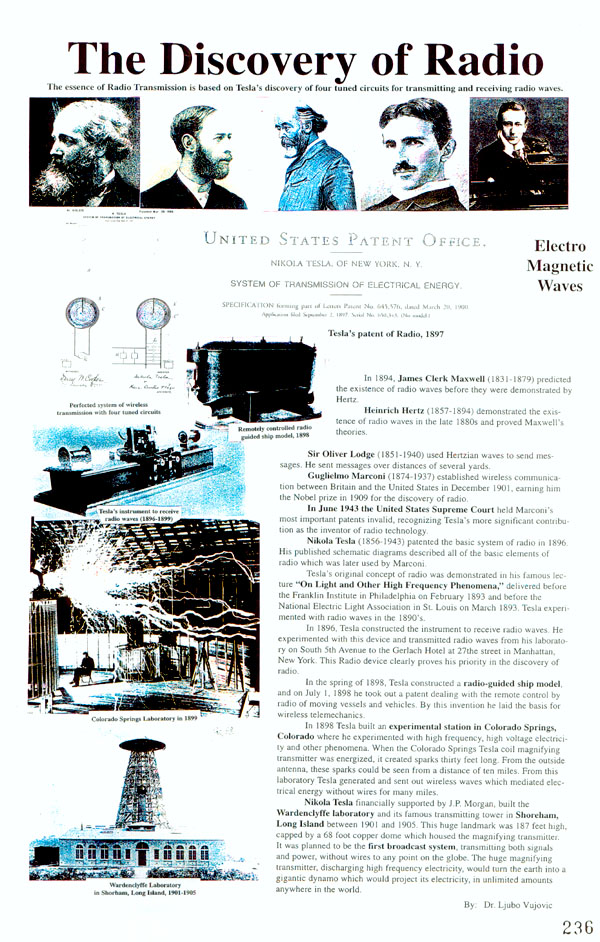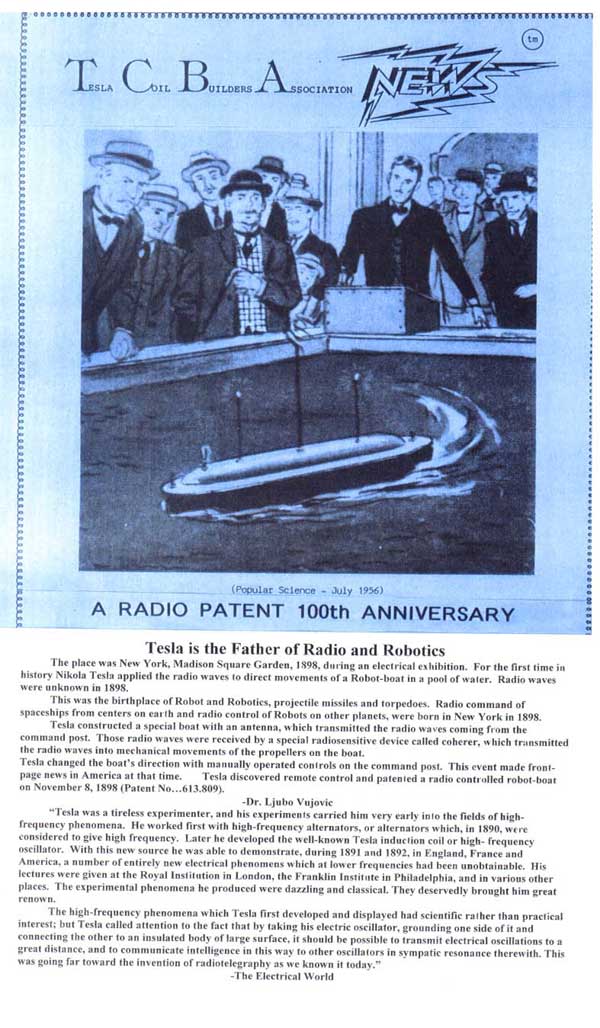
Welcome to the Tesla Memorial Society of New York Website
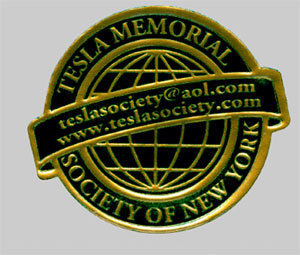
The history of Montenegro and Serbia was an inspiration to Nikola Tesla
Montenegro
is a mountainous Balkan country of rough beauty, located on the Adriatic
coast, across from Italy. Montenegrins
are Serbian people. The
history of Montenegro, is the history of the wars and battles, fought
against foreign domination. Montenegro
is the only Balkan country that stood free and independent throughout
centuries, resisting constant foreign
Outstanding
leaders of Crnojevic and Petrovic dynasties govern Montenegro throughout
centuries. Montenegro
formed part of the medieval Serbian Kingdom.
After 1355 the Kingdom began to collapse, and Montenegro became a
independent state. Crnojevic
dynasty ruled Montenegro until 1516.
Eastern Orthodox Bishops of Petrovic dynasty ruled until 1851.
That year, Montenegrins Ruler Danilo I took the title of prince.
Montenegro became a kingdom in 1910.
Through marriages of his daughters with European dynasties King
Nikola of Montenegro was called, "The Father in law of
Europe." Elena, Queen of Italy, was King Nikola's daughter.
The
culture history of Montenegro was influenced by Venezia, its Italian
neighbor across the Adriatic sea. The
first printing press in Montenegro was brought from Venezia, less than a
decade after Johannes Gutenberg discovered printing press in Germany
during the mid-1400's. The
first printed book by south Slavs so called "Octoih" was
printed in Montenegro in the printing press called "OBOD".
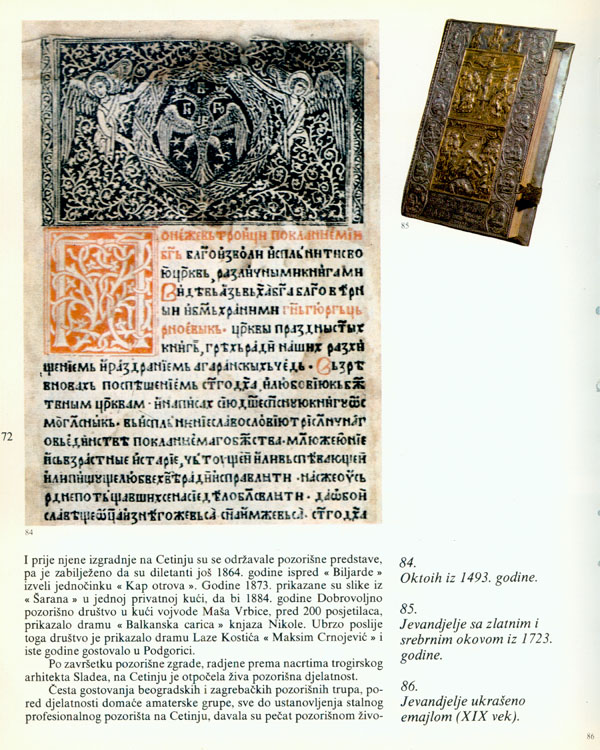
Above: The
first printed book by south Slavs so called "Octoih" was
printed in Montenegro in the printing press called "OBOD".
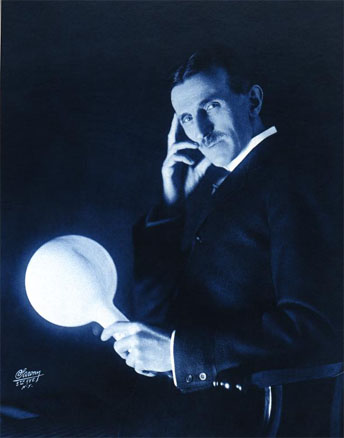
Nikola Tesla holding a gas-filled phosphor-coated light bulb which was illuminated without wires by an electromagnetic field from the "Tesla Coil".
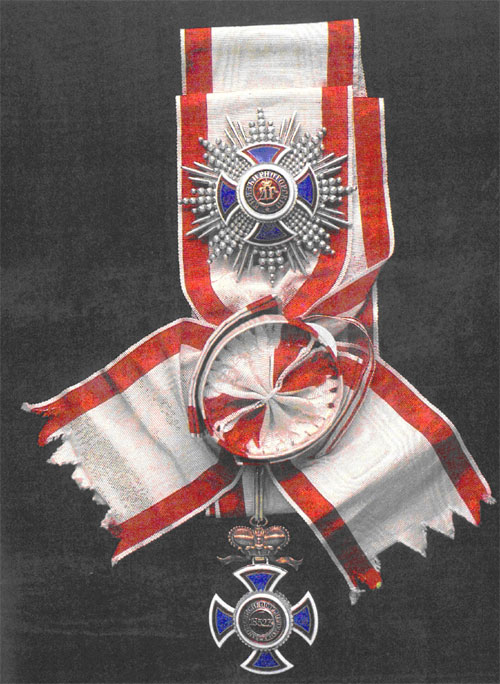
Above: The Order of Danilo given to Nikola Tesla by King Nikola of Monetegro in 1895.
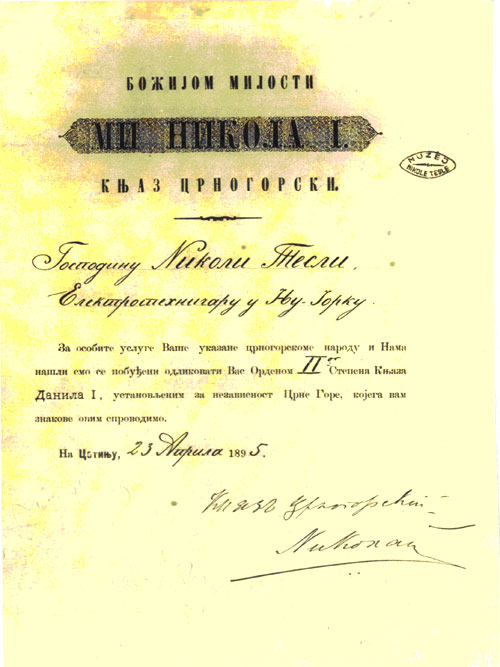
Above: The Diploma of the Order of Danilo in Cyrillic.
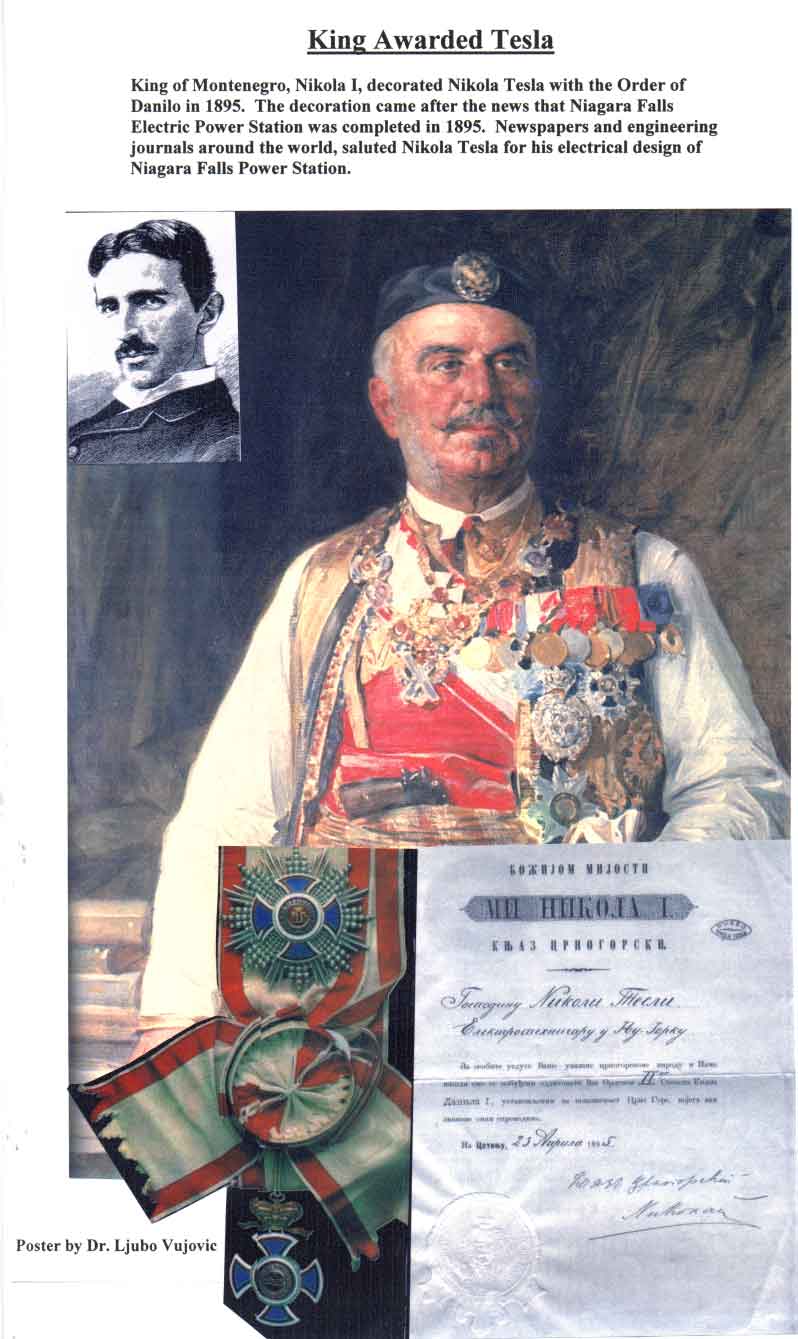
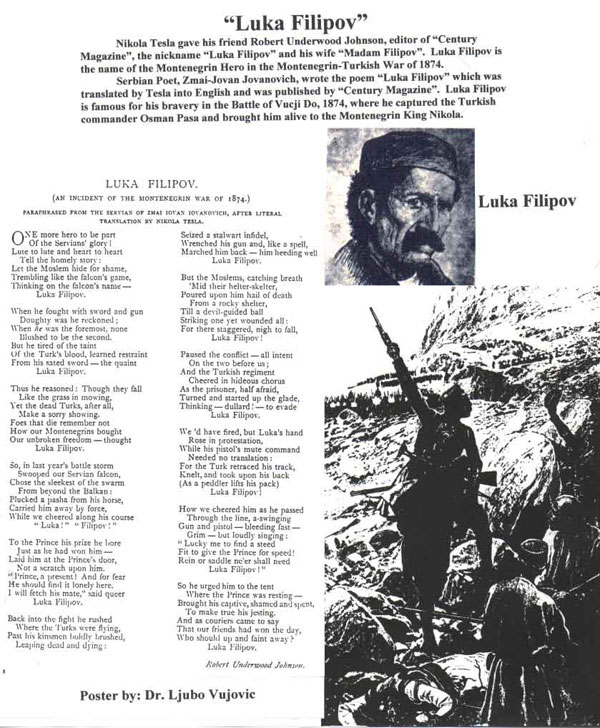
Nikola Tesla called his friend Robert Underwood Johnson, "Luka Filipov" and Madame Johnson, "Miss Filipov". Luka Filipov was a Serbian Montenegrin hero from the "Battle on Vucji Do" in Montenegro, 1876 between Montenegrins and Turks. Luka Filipov captured in the "Battle on Vucji Do" the Turkish commander Osman Pasa and brought him to the Montenegrin King Nikola Petrovic. Above his heroism in the "Battle on Vucji Do" the famous Serbian poet Zmaj Jovan Jovanovic wrote a poem called "Luka Filipov". Nikola Tesla translated the poem from Serbian to English and the poem was published in Century Magazine.
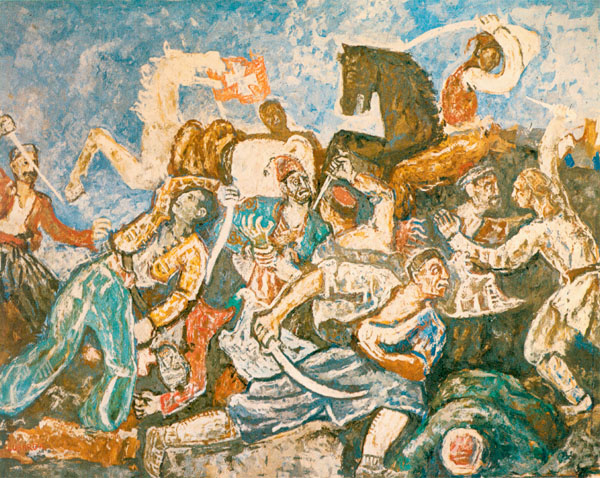
Above: Picture from famous Serbian artist Petar Lubarda, of the
Battle of Vucji Do in 1876. This battle was between the
Montenegrins and Turks, in Vucji Do
(translation: "Valley of Wolves") where the outnumbered Montenegrin Army
defeated the larger Turkish Army. After this battle, Montenegro
was recognized as an independent state by the Congress of Berlin in
1878.
During the Battle of Vucji Do, Luka Filipov, Montenegrin hero, captured
the Turkish Commander Osman Pasha and brought him alive to King Nikola
of Montenegro. Serbian poet, Jovan Jovanovic Zmaj, wrote the poem
"Luka Filipov" which Nikola Tesla translated into English. The
poem was published in Century Magazine.
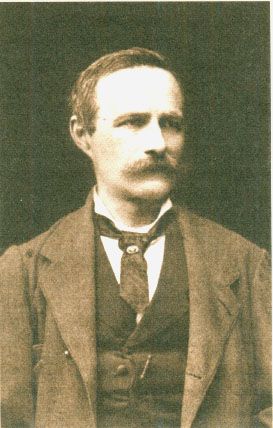
Above: Serbian poet, Jovan Jovanovic Zmaj, wrote the poem "Luka Filipov".
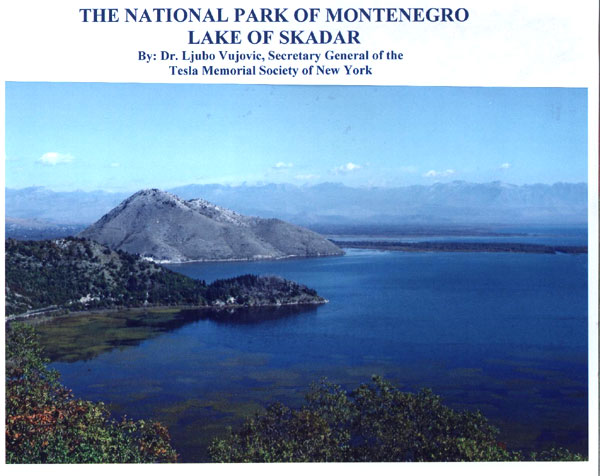
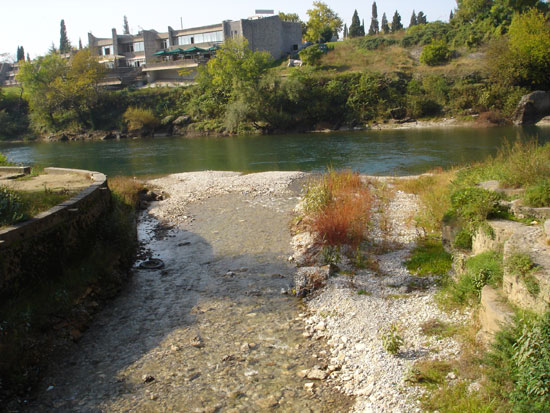
Above: Place where the Moraca River and Ribnica River met in Podgorica, Montenegro. Around this area was the City of Ribnica, where famous Serbian Ruler Stevan Nemanja was born. Nemanja is the father of Saint Sava, the founder of the Serbian Orthodox Church, the first Archbishop of Serbia and founder of Hilandar Monastery.
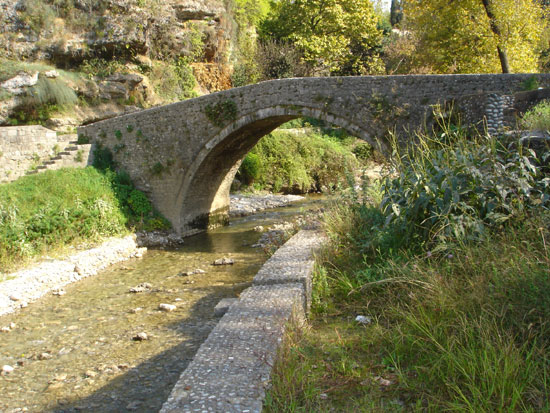
Above: Bridge of Stevan Nemanja, who was born in the city of Ribnica. Nemanja formed and ruled the first Serbian State. Nemanja was the head of the Medieval Serbian Nemanjic Dynasty.
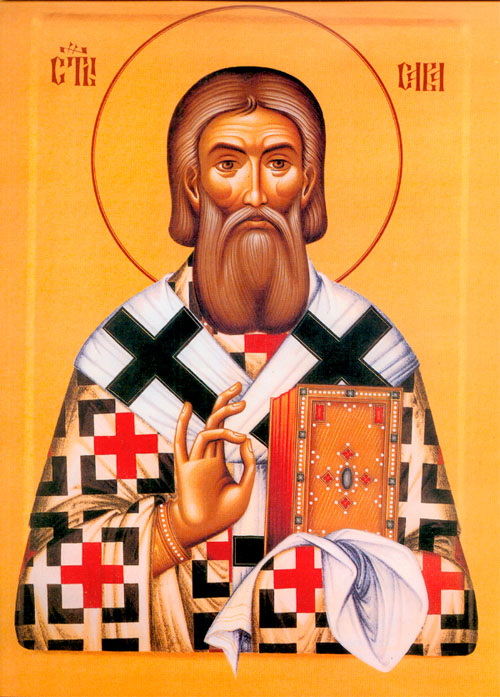
Above: Zupan Stevan Nemanja's son, Saint Sava, the first Serbian Archbishop. Saint Sava and his father, Zupan Stevan Nemanja, founded the first Serbian Monastery in Mount Atos, Greece (after getting permission from the Byzantine Tzar), called "Hilandar".
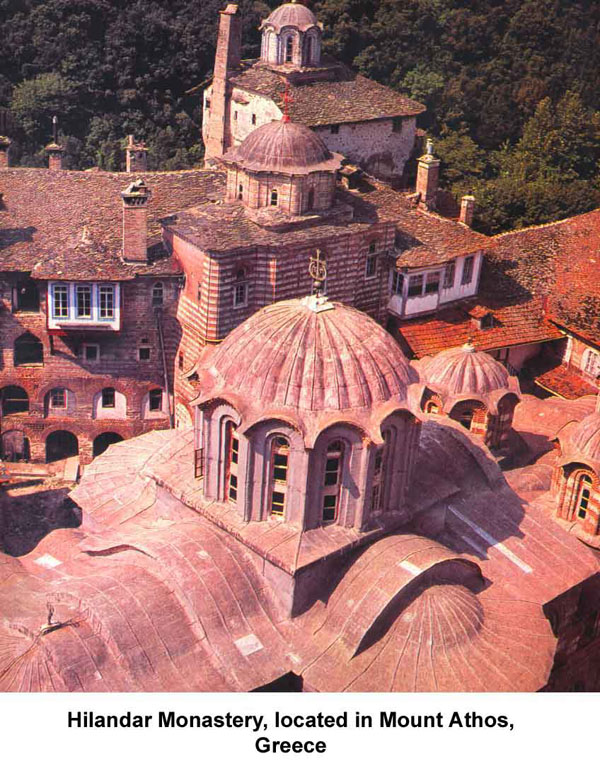
Above: Hilandar Monastery is a symbol of 800 years of the Serbian Orthodox Church. Hilandar is a symbol of the Christian World.
Click here for Eight Centuries of Serbian Hilandar Monastery
For more information about Serbia and its history please go to "The Glory of Byzantium"
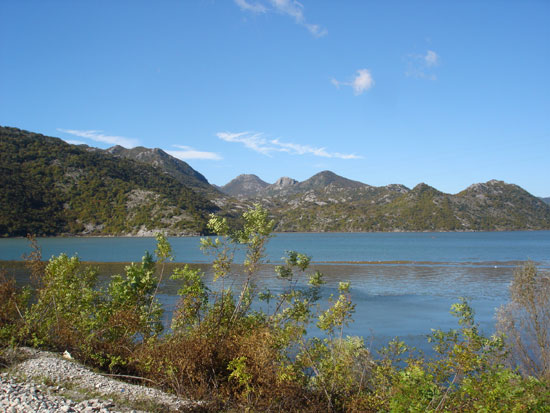
Above: Lake of Skadar, the biggest lake in the Balkans. A big reservation of birds and fish.
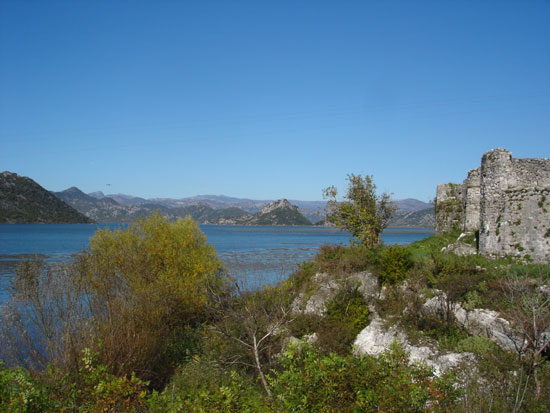
Above: Lake of Skadar, the biggest lake in the Balkans. A big reservation of birds and fish.
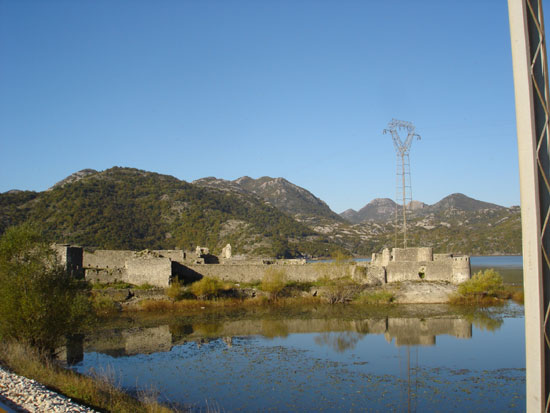
Above: Lesendro Fortress (Turkish Fortress) on the Lake of Skadar, testifying to the history of Montenegro and the occupation this part of Montenegro by the Turks. The Turks invaded the Balkans after the Kosovo Battle, where the Serbian Army was defeated in 1389.
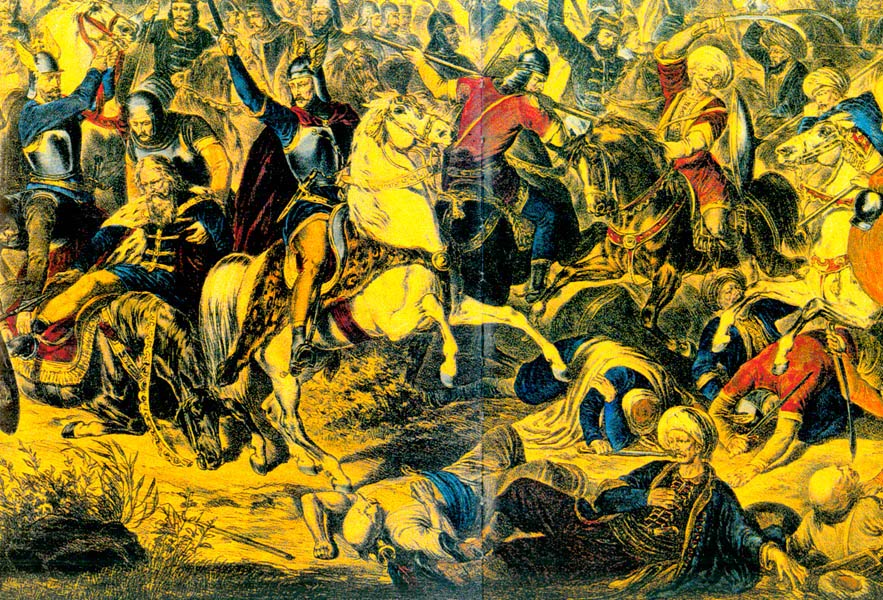
Above: The Battle of Kosovo (1389), the Ottoman Turks who outnumbered Serbs 10 to 1, defeated the Serbian Army.
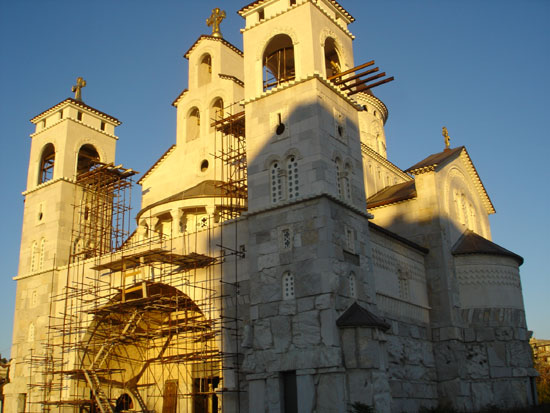
Above: New Serbian Orthodox Cathedral in Podgorica, capital of Montenegro.
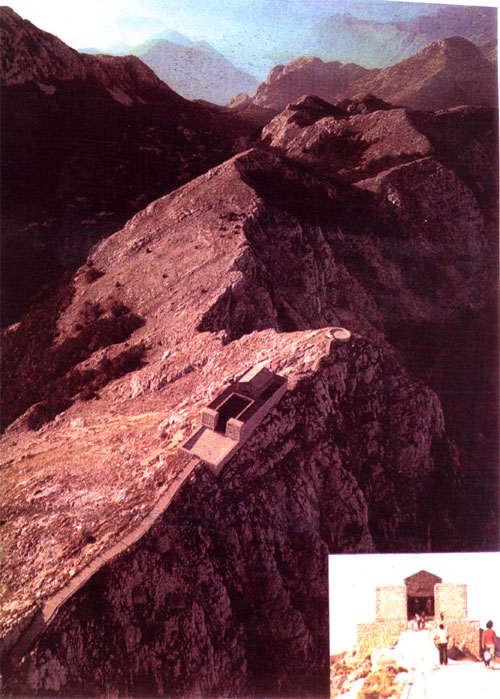
Above: Njegos Mausoleum, on the mountain of Lovcen, Njegos was the greatest poet of the South Slavs. The Mausoleum was the work of famous Croatian Sculptor, Ivan Mestrovic.
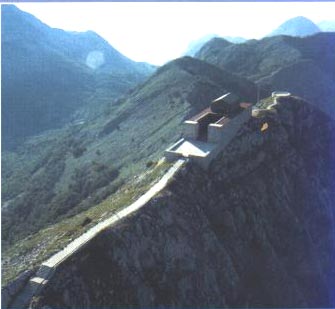
Above: Mausoleum of the greatest poet of South Slavs, Petar Petrovic-Njegos in the Montenegrin Mountain of Lovcen, near the capital of Montenegro, Cetinje. The work of Ivan Mestrovic.
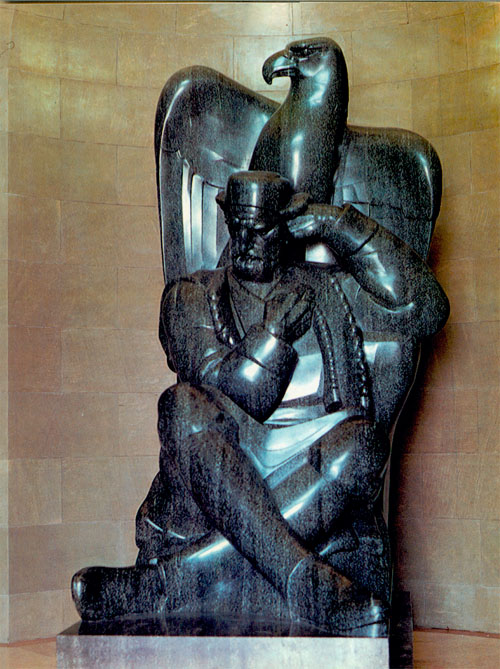
Above: Sculpture of Montenegrin Poet and Bishop of Montenegro, Njegos. This was the work of famous Croatian sculptor Ivan Mestrovic. The Njegos sculpture above is located in Njegos Mausoleum on Mount Lovcen. One of his most famous works was "Gorski Vijenac" (translated "Mountain Wreath").
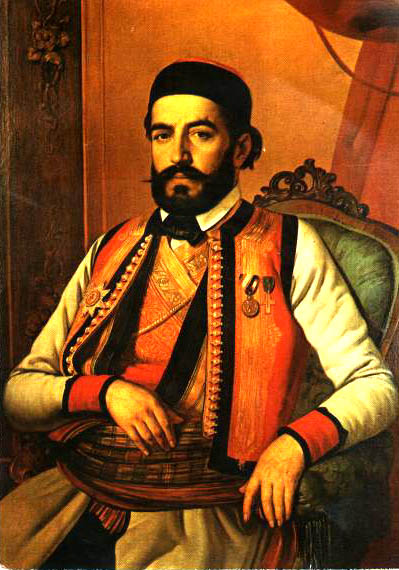
Above: Petar Petrovic Njegos - the greatest poet of the South Slavs
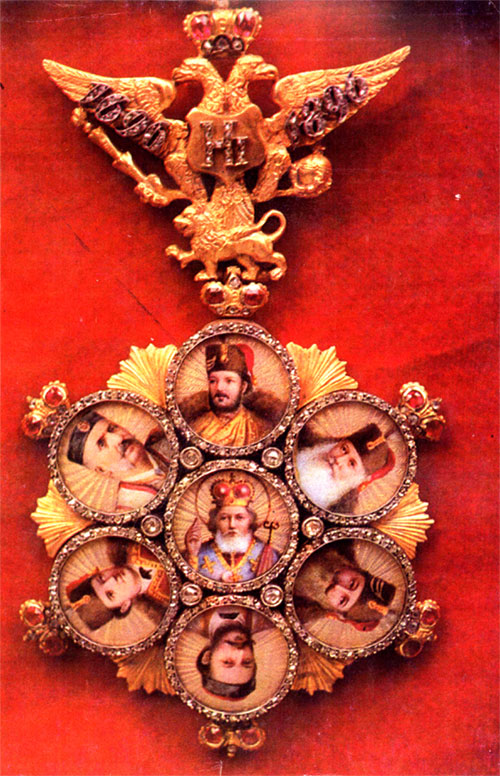
Above: The Petrovic Dynasty which governed Montenegro for so many centuries.
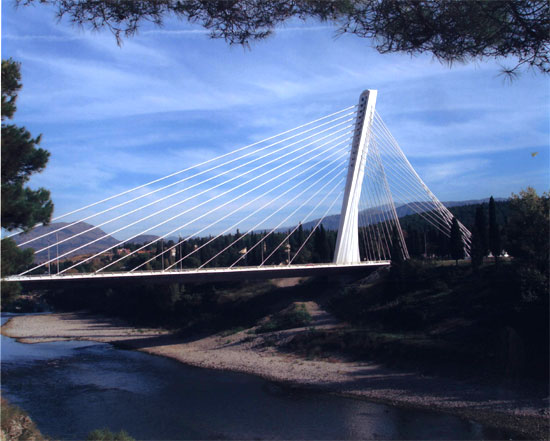
Above: Bridge over River Moraca in Podgorica, Moraca is the main water supply to Lake Skadar.
MONTENEGRIN ROYAL FAMILY

Above: The Montenegrin
Royal Family with King Aleksandar Karadjordjevic.
(Photo taken 1910 during the crowning of King Nikola of Montenegro)
King Nikola of Montenegro "The father-in-law of Europe" is seated
with Queen Milena in the middle of second row. In front of King
Nikola is seated Prince Aleksandar Karadjordjevic, future king of
Yugoslavia. King Aleksandar, born in Cetinje, was the grandson of
King Nikola.
Standing in the back row (left to right): Prince Petar Nikolajevic Romanov (Russia), Prince Franc Batenberg (England), Princess Vjera, Princess Ksenija, Crowned prince Danilo, Prince Mirko, Prince Petar.
Seated in Middle Row (left to right): Milica Petrovic (Juta Meklenburg Strelic, Germany), Princess Ana Batenberg, Queen Jelena of Italy, Queen Milena of Monetegro, King Nikola, Princess Milica Romanov, King Viktor Emanuel III of Italy and Princess Natalija.
Seated on ground in the front row (left to right): Princess Jelena Karadjordjevic, Princess Marina Petrovna Nikolajevic, Prince Aleksandar Karadjordjevic (future King of Yugoslavia).
King Nikola of Montenegro was called “Father In-law of Europe” because his daughters were married to the European noble families. His daughter Elena was the beloved Queen of Italy, wife of Italian King Victor Emanuel.
King Nikola’s grandson was King Aleksandar of Yugoslavia. Born in Cetinje from the princess of Montenegro – Zorka, daughter of King Nikola.
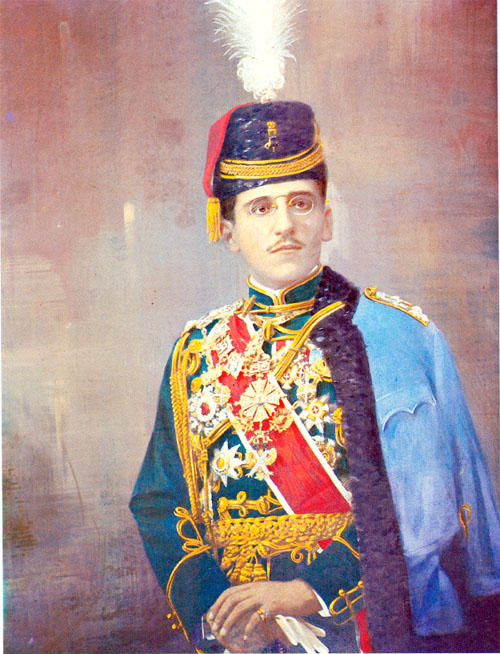
Above: King Aleksandar Karadzordjevic of Yugoslavia was born in Cetinje. Aleksandar's mother was Princess Zorka, the daughter of King Nikola of Montenegro.
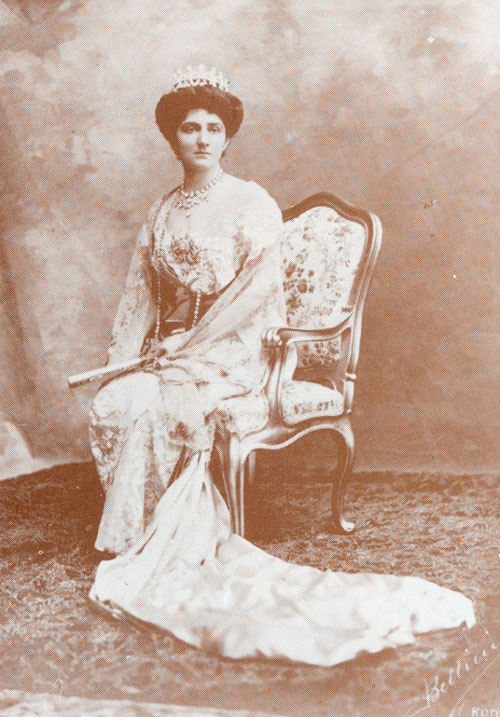
Above: Queen Elena (Jelena) of Italy, was the daughter of King Nikola of Montenegro, married King Viktor Emanuel III of Italy.

Above: King Viktor Emanuel III of Italy married Queen Elena (Jelena), the daughter of King Nikola of Montenegro.
GUGLIELMO MARCONI
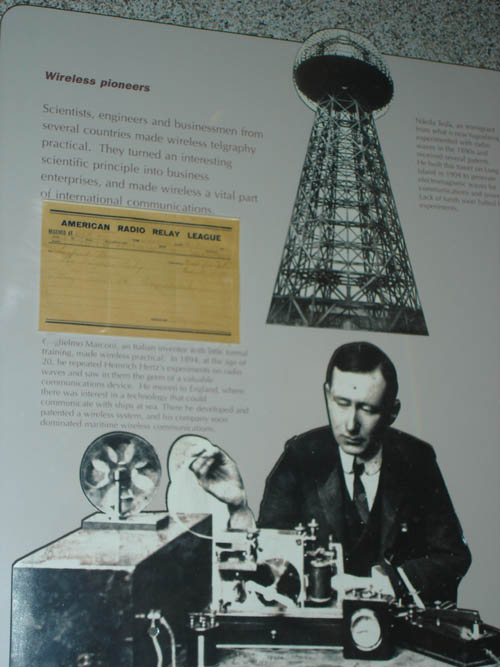
Above: Wardenclyffe Tower and Marconi in the Radio section of the
National Museum of American History, Washington D.C.
The Italian Nobel Prize winner in 1909, installed the first Radio Station in Montenegro in 1910 during the coronation of King Nikola. It was built on the mountain of Voluica near Bar, the Montenegrin port city on the Adriatic Sea. This radio station was used by the Montenegrin Post Office Service.
The Marconi station was a gift of Italy to Montenegro because the Italian Queen Elena was daughter of King Nikola.
Marconi installed radio stations on ships and shores of many countries around the world. These radio stations served as communication between ships and shore stations in case of sea disasters. Marconi built a financial empire which helped him win the recognition in the discovered of radio.
During the celebration of Marconi’s radio station on the mountain of Voluica in Montenegro, Marconi’s daughter came to Montenegro to participate in the celebration. The Tesla Memorial Society of New York greeted Marconi’s daughter in a article published by Montenegrin news paper “Pobjeda”.
Nikola Tesla Discovered Radio
